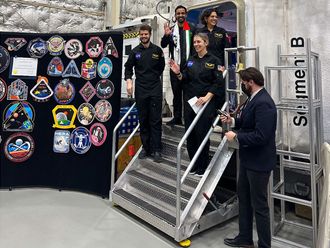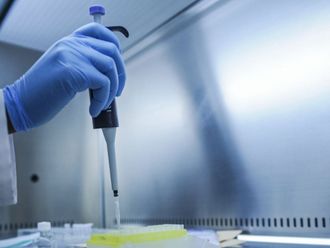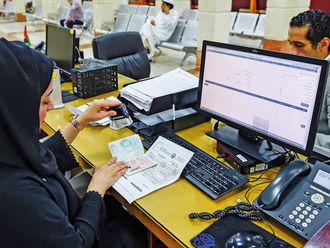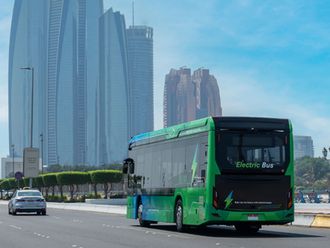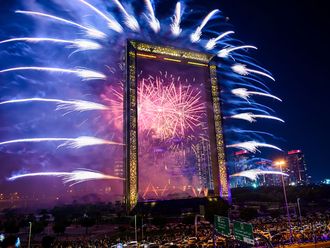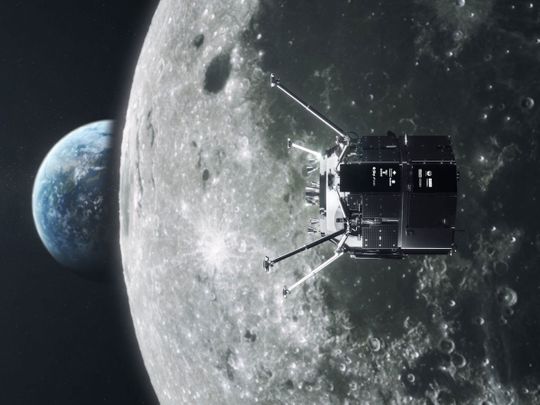
Dubai: More milestones in space exploration are expected in 2023 for the UAE, following the successful launch of Moon-bound Rashid Rover in December 2022.
UAE astronaut Sultan AlNeyadi is headed to the International Space Station (ISS) in mid-February to conduct scientific experiments for six months; Rashid Rover is expected to land on the Moon’s Atlas Crater by April; and MBZ-SAT, touted as the region’s biggest and most powerful satellite, will be launched before the year ends.
Hope Probe, meanwhile, is constantly sending new pictures and data of the Martian atmosphere, and the UAE has also announced future exploration of other planetary objects as part of its Mars 2117 programme.
“From the Earth’s orbit to the asteroid belt, 2023 will be a very exciting year for space scientists in the UAE,” Dimitra Atri, astrophysicist at New York University in Abu Dhabi, told Gulf News.
He added: “I am looking forward to the landing of the Rashid Rover which will enable us to study the surface of the Moon in greater detail. The Hope Probe is continuing to surprise us with new phenomena on Mars and keeping us busy. The six-month mission to the ISS will tell us more about the impact of long-duration spaceflight on astronauts and help us prepare for crewed missions to Mars.”
Here’s a rundown of the UAE’s space exploration milestones this 2023.
Long space mission
AlNeyadi is set to become the first Arab astronaut to conduct a long-duration space mission. He and Hazzaa AlMansoori, who was the first Emirati who flew to ISS for an eight-day mission in September 2019, have recently completed the European Space Agency (ESA) Columbus training for the SpaceX Crew 6 mission.
The upcoming mission will make the UAE only the eleventh country in the world to send its astronauts on a long-term mission to space. According to the Mohammed Bin Rashid Space Centre (MBRSC), AlNeyadi “will conduct numerous in-depth and advanced scientific experiments as part of the second mission of the UAE Astronaut Programme that will pave the way for future UAE missions and further push the capabilities for journey beyond Earth.”
The earliest targeted launch date for SpaceX Crew-6 mission is mid-February 2023, from Launch Complex 39A at NASA’s Kennedy Space Centre in Florida. Aside from AlNeyadi, the SpaceX Dragon spacecraft named Endeavour will also carry NASA astronauts, including mission commander Stephen Bowen and pilot Woody Hoburg; along with Russian cosmonaut Andrey Fedyaev, who will join as mission specialist like AlNeyadi. This will be the first spaceflight for Hoburg, Fedyaev and AlNeyadi, and the fourth mission to space for Bowen.
MBRSC will provide further details of AlNeyadi’s six-month space mission at a press conference this month.
Marhaba, Moon
This April would be the most critical stage for the first Emirates Lunar Mission (ELM), when Rashid Rover is expected to land on the Moon’s southeastern outer edge of Mare Frigoris (Sea of Cold).
In a previous interview with Gulf News, ELM project manager Dr Hamad Al Marzooqi said MBRSC engineers are gearing for the next ‘critical stages’ of Rashid Rover which is cruising to the Moon, safely stored inside a special compartment of the Japanese lunar lander Hakuto-R.
“Rashid Rover is in good health – that is a very good sign in our mission. There will be some critical points in the coming weeks – we are looking forward to them and we will keep everyone posted once we reach those points,” noted Al Marzooqi, adding “landing would be the most critical part of the lunar mission and only few countries have achieved it successfully
Al Marzooqi continued: “Once Hakuto-R safely lands, the rover will be released and we can start our operation where we will deploy the mast and antenna of the rover, following check-up and calibration of all instruments and ensuring that all systems are working properly. Then the ‘big moment’ will happen when Rashid Rover will touch the lunar surface and we can declare that the UAE has stepped on the Moon for the first time.”
The four-wheeled Rashid Rover — named after the late Sheikh Rashid bin Saeed Al Maktoum, builder of modern Dubai — will study the Moon’s surroundings for one lunar day, which is equivalent to 14.75 days on Earth. It will also perform numerous scientific experiments to measure the effectiveness of materials on the lunar surface, and explore the process of overcoming natural obstacles on the Moon.
Region’s biggest satellite
This year, the UAE is also expected to launch the region’s biggest and most powerful satellite on a Falcon 9 rocket. Named after the President His Highness Sheikh Mohamed bin Zayed Al Nahyan, MBZ-Sat, is designed to be three times more efficient than KhalifaSat — the first UAE-made satellite launched in 2018.
The 700kg MBZ-Sat will have advanced high-resolution camera that can take images from 500 kilometres above the Earth’s surface.
The first Earth-observation satellites by the UAE were DubaiSat-1 and DubaiSat-2, that were jointly built by Emiratis and South Koreans. KhalifaSat was the first Emirati-built satellite. MBZ-Sat is expected to improve image quality and increase download speed to supply content more efficiently to customers.
‘The best is still to come’
The UAE’s space ambitions can be best summed up by a previous tweet by His Highness Sheikh Mohammed bin Rashid Al Maktoum, Vice President and Prime Minister of the UAE and Ruler of Dubai, when he visited MBRSC to witness the launch of Rashid Rover, the Arab world’s first mission to the Moon.
He said: “Rashid Rover is part of an ambitious space program in the UAE. We started with Mars and now moving to the moon while eying Venus. Our goal is to share knowledge, develop our capabilities, and add a scientific footprint in human history. Reaching the Moon is yet another step forward in the UAE’s ambitious journey. The aspirations of Emirati people are boundless and nothing can hold them back. The best is still to come.”



